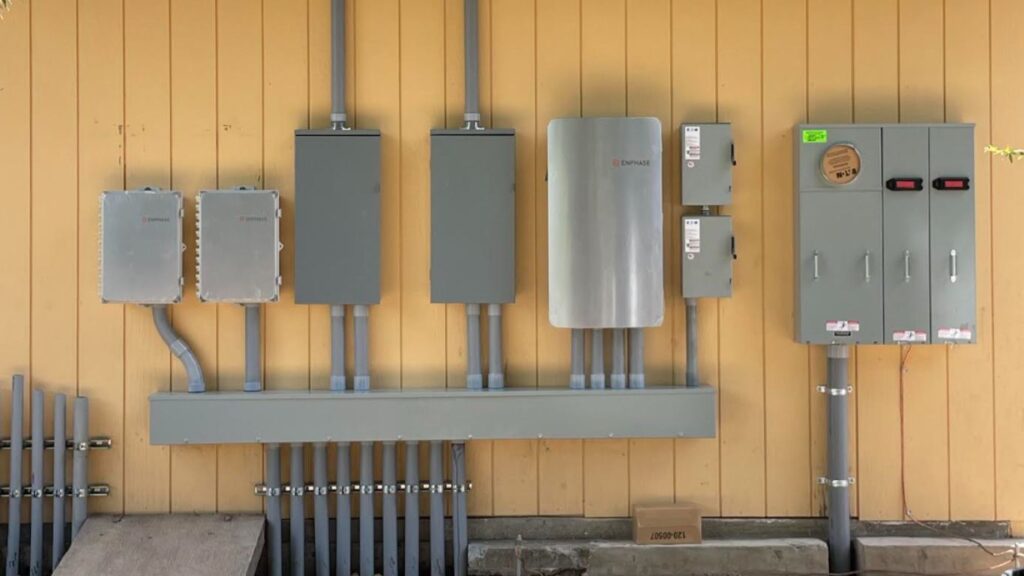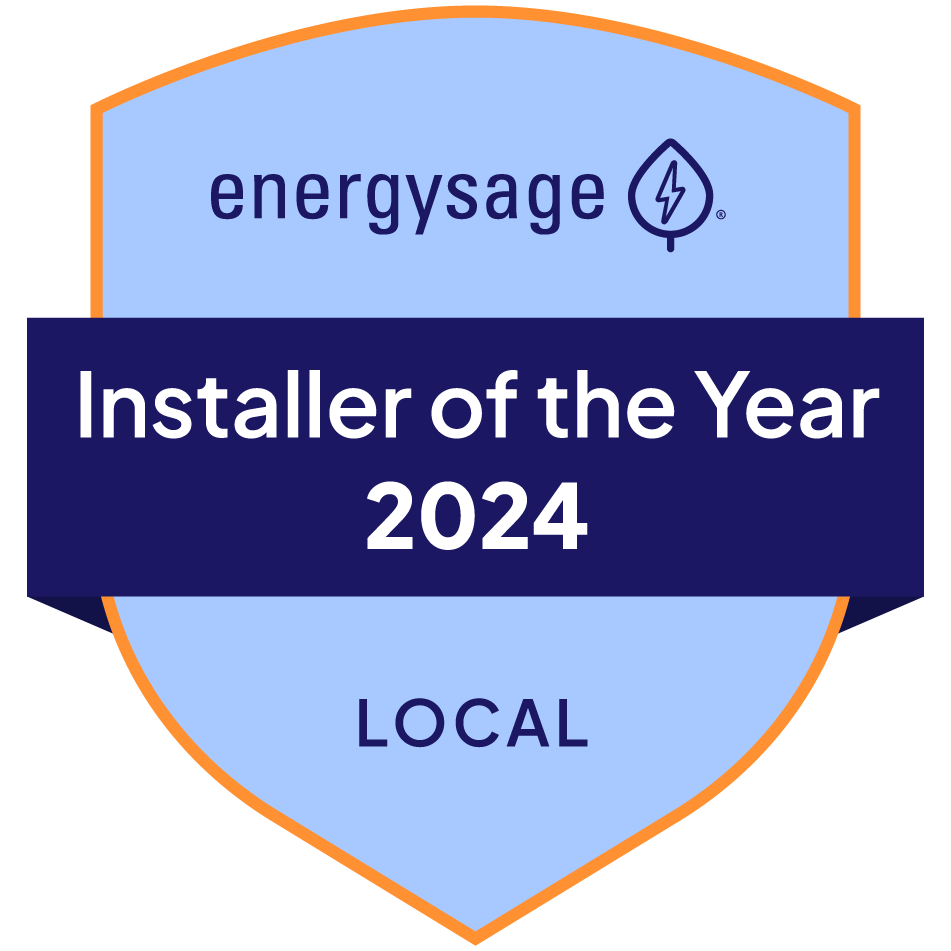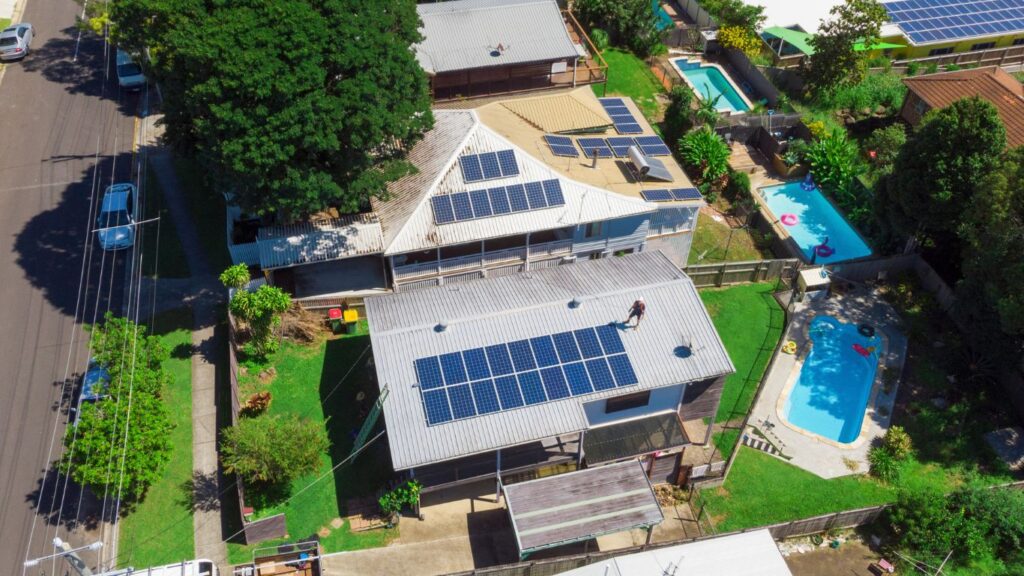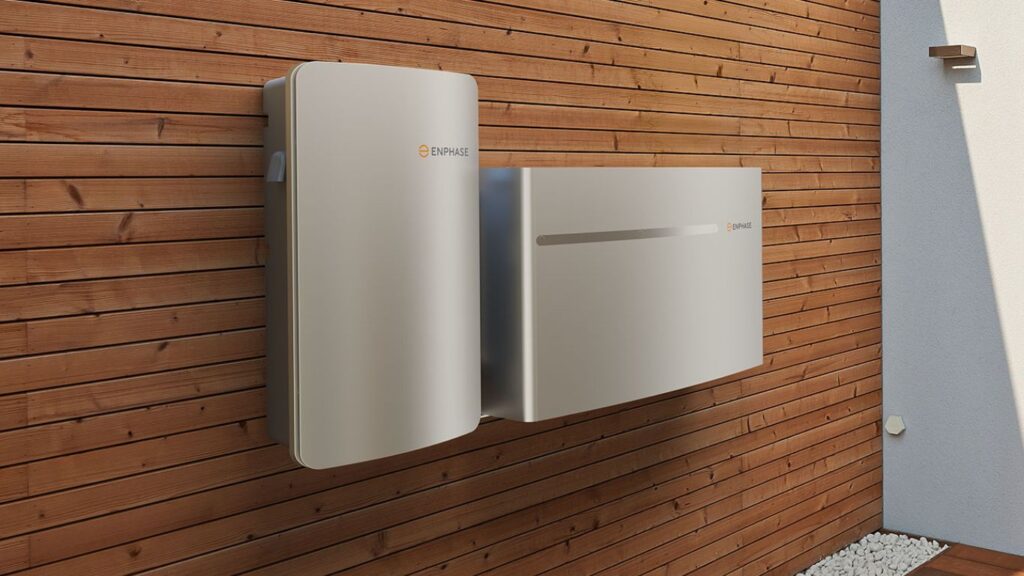Solar Plus Batteries
Home solar power has emerged as a prominent clean energy solution, with growing significance in both the commercial and residential sectors. However, there is a common misconception about solar panel installations – that having them alone is enough to power a home during grid outages.
This is not the case, due to safety protocols designed to protect utility linemen from electrocution. The key solution to enable solar-powered homes to maintain power during grid outages is to install battery backup systems that can store solar energy and automatically transfer it when needed.
The Importance of Backup Power in the Face of Power Outages
Power outages have become increasingly common in recent years. According to data from the U.S. Energy Information Administration, the average electricity customer experienced over 7 hours of interruptions in 2021. These outages can be caused by various factors, with severe weather events being a major contributor. Climate Central reports that between 2000-2021, there were 1,542 weather-related power outages, with the most common causes being winter storms (22%), tropical cyclones (15%), and thunderstorms (12%).
With power grids under increasing strain from extreme weather, many homeowners feel a need for backup power to provide a sense of security. Having a solar and battery storage system allows households to remain “home-powered” even when the main grid goes down. This provides vital resilience in uncertain times when outages can occur with little warning. Knowing your home will have electricity despite storms or other grid failures brings significant peace of mind.
Solar Power Alone is Insufficient During Grid Outages
A grid-tied solar system works by connecting directly to the electric grid. The solar panels produce DC electricity, which is converted by an inverter into AC electricity that your home can use. Any excess solar energy that isn’t immediately used is fed back into the grid. This is known as net metering and allows you to earn credits from your utility company for that excess energy. The meter runs forward when you pull energy from the grid but spins backward and credits your account when your system produces extra energy.
However, in the event of a power outage, a grid-tied solar system without a battery backup will also lose power. This safety measure prevents solar systems from back-feeding electricity into the grid while crews are working to restore power, which could electrocute workers. Most grid-tied systems have an automatic transfer switch that quickly disconnects from the grid when it detects an outage.
So while grid-tied solar works well under normal conditions thanks to net metering, having the panels alone is not enough to power a home during a blackout. The key is adding battery storage to the system, which can store solar energy for use anytime, even at night or during an outage when grid power is not available.

Role of Battery Storage
Battery storage systems allow homeowners to use stored solar power from the batteries during grid outages when solar panels alone cannot provide power. Determining the right storage capacity for your home is crucial. The general guideline is to have enough capacity to power critical loads for 1-2 days without sun, which often equates to 10-15kWh for most homes.
- DC-coupled systems – The solar panels charge the batteries directly and the batteries connect to an inverter to power AC loads in the home. This is the simpler and usually cheaper option.
- AC-coupled systems – The solar panels connect to a grid-tied inverter, which charges a battery bank separately. This allows continued net metering when the grid is up but the batteries provide backup power during an outage. AC systems have more flexibility but cost more.
Key benefits of adding a solar battery backup system include:
- Uninterrupted power during grid failures
- Reduced electricity bills by optimizing solar energy use
- Increased energy independence and resilience
The right solar battery backup system size and type depends on your budget, energy usage needs, and desired backup time. Consulting a solar professional can help determine the optimal system.
Incentives in Oregon for Battery Backup Installation
Oregon offers various state and federal incentives to make installing a solar and battery storage system more affordable for homeowners and businesses. These incentives help offset the upfront costs of adding battery backup capabilities.
The biggest incentive is the federal solar tax credit, which allows you to deduct 30% of the cost of installing a solar energy system from your federal taxes. This applies to both the solar array and any battery storage you add. For example, if you install a $15,000 solar and battery storage system, you can deduct $4,500 from your federal taxes. After 2035, the credit will be discontinued.
For low-to-moderate income households, Oregon’s Solar + Storage Rebate Program provides rebates covering up to 60% of the net system cost or $5,000, whichever is less. This significantly reduces the payback period.
Additionally, utility companies like Portland General Electric offer special rates under net metering programs that allow solar customers to get credit for excess power they export. This further lowers electric bills.
Overall, Oregon offers very favorable incentives for adding battery storage to residential or commercial solar installations. Speak to a tax professional to determine your exact savings.
Additional Advantages of Solar Battery Storage
Solar battery storage provides additional advantages beyond just powering a home or business during grid outages. One key benefit is promoting clean energy and reducing reliance on non-renewable resources. By storing solar energy in batteries during daylight hours, homeowners and businesses can use that stored clean energy during peak demand periods rather than drawing additional power from carbon-emitting sources like coal or natural gas. This allows solar users to maximize their use of renewable energy.
Another advantage is the potential to integrate an EV charger with the solar battery system. The stored solar energy in the batteries can be used to conveniently charge an electric vehicle overnight or during cloudy periods when solar production is low. This provides additional value to the battery system.
3 Importance of Solar Plus Battery Storage
Opting for just solar panels is not enough – it is vital to also install a solar battery backup system. This combination assures uninterrupted power even during grid outages. Without a battery system, solar panels will be unable to provide power when the grid goes down due to safety measures that disconnect them.
Battery storage paired with solar allows homeowners and businesses to utilize clean, renewable energy around the clock. This not only provides energy resiliency but also helps reduce reliance on fossil fuels and contributes to a more sustainable future. Solar energy production fluctuates with weather conditions, but battery storage systems can accumulate surplus solar power during peak production and discharge it later when needed.
In summary, integrating battery backup with solar panels is crucial for uninterrupted power during outages. Even more, it enables maximal utilization of clean solar energy and accelerates the transition away from non-renewable resources. Solar plus energy storage paves the way for a more resilient and sustainable clean energy future.
1. The Growing Frequency of Natural Disasters and Power Outages
The past decade has seen a marked increase in the frequency and intensity of natural disasters like earthquakes, hurricanes, and wildfires across the United States. According to a report from the National Centers for Environmental Information (NCEI), the U.S. sustained 318 weather and climate disasters since 1980 where overall damages reached or exceeded $1 billion, with total costs exceeding $2 trillion. The western states in particular have experienced devastating wildfires, with the average acreage burned in wildfires increasing from 3.7 million acres between 1983-1999 to 7.9 million acres between 2000-2020.
These natural disasters often cause extensive power outages due to damage to transmission lines, substations, and other infrastructure. A study from the University of Washington found that between 2018-2020, over 231,000 power outages lasting more than an hour occurred in the United States. Severe weather was attributed as the cause of 68% of these outages.
2. Solar Power Alone is Insufficient During Grid Outages
When a home has a grid-tied solar system without battery backup, any excess solar energy produced flows back into the electric grid. This enables the concept of net metering, which is a billing mechanism that credits solar panel system owners for the electricity they add to the grid.
However, in the event of a power outage, a grid-tied solar system without battery storage will also lose power. This safety measure prevents backfeeding electricity into the grid, which could electrocute utility workers trying to restore power.
The automatic transfer switch plays a key role in preventing this dangerous backfeed. It senses when the grid goes down and disconnects the solar system from the grid. Without a backup battery, the solar system cannot power the home during an outage. This underscores the need for a solar battery storage system to store excess solar energy and provide backup power.
3. Peak Hour Cost Savings with Solar Battery Storage
Installing a solar battery storage system allows homeowners to tap into stored solar energy during peak hours when electricity prices are highest. Solar energy is free, while grid electricity can cost over 50 cents per kWh during peak times. By using your stored solar energy instead of expensive grid power in the evenings, you can significantly reduce energy costs.
According to EnergySage, adding battery storage to a solar system can reduce peak hour energy costs by up to 90%. The battery charges up when solar production is high and electricity prices are low. Then when peak rates hit, the battery automatically discharges to power your home and avoid those high utility costs. This ‘peak shaving’ with solar battery storage maximizes savings.
In addition to cost savings, using your solar battery during peak hours promotes energy independence and home sustainability. By relying on your own stored solar power instead of the grid during peak times, you reduce strain on non-renewable energy resources. Solar battery storage allows for a more resilient and eco-friendly home.

Free Solar Plus Battery Quote
Amid rising power outages and the limitations of standalone solar systems, integrating battery storage becomes paramount. Oregon’s incentives further enhance the appeal. To ensure uninterrupted power and capitalize on these benefits, it’s good to consider solar plus battery solutions. We strongly recommend securing a free quote for a tailored energy storage installation, fortifying your energy independence and resilience.





